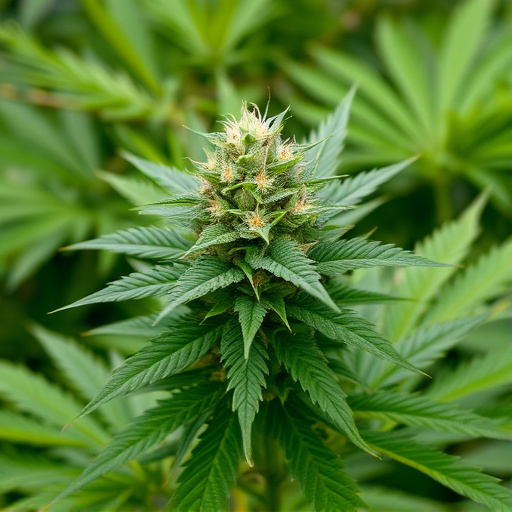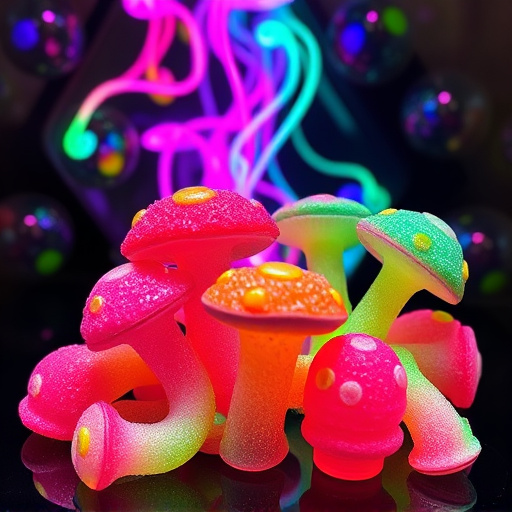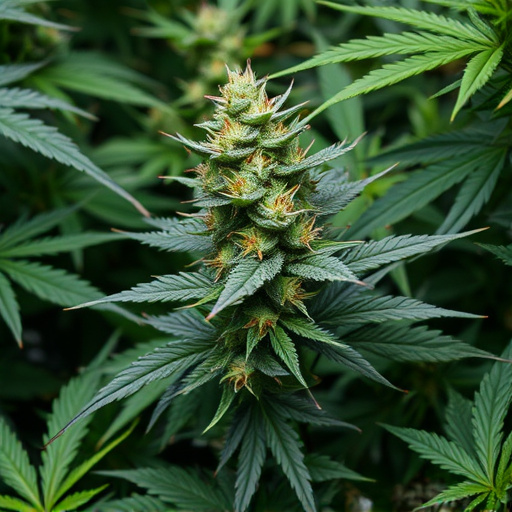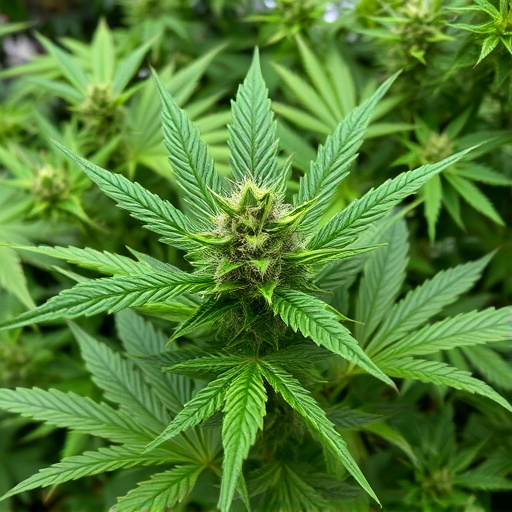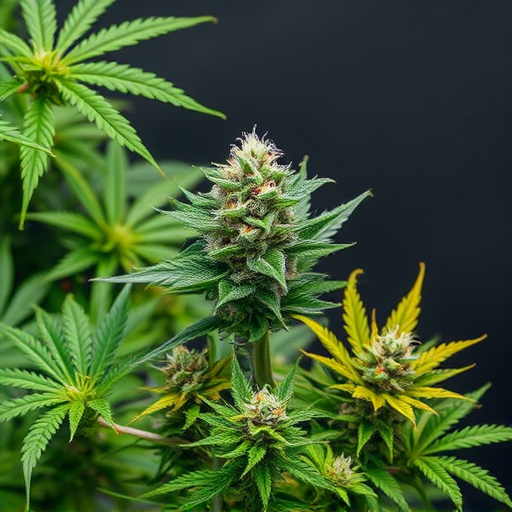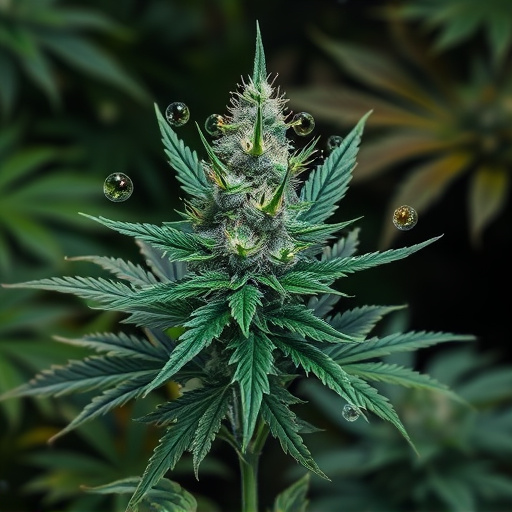Terpenes, aromatic compounds in cannabis, vary greatly between strains, contributing to unique flavors, aromas, and potential therapeutic benefits. Compounds like myrcene and limonene offer distinct experiences—myrcene promoting relaxation, limonene enhancing energy. Terpenes synergize with cannabinoids (THC, CBD) in the entourage effect, influencing desired outcomes from cannabis use. Understanding terpene profiles allows users to choose strains tailored to their specific needs, whether recreational or medicinal.
Terpenes, the aromatic compounds responsible for the distinct scents and flavors of cannabis flowers, play a pivotal role in the overall user experience. Beyond their contribution to the plant’s fragrance, terpenes interact synergistically with cannabinoids, influencing the therapeutic potential of different strains of cannabis. This article explores how these often-overlooked molecules shape the effects and benefits associated with various cannabis varieties, offering valuable insights for cultivators and consumers alike.
- Understanding Terpenes: The Aromatic Compounds of Cannabis
- The Role of Terpenes in Different Strains of Cannabis
- How Terpenes Impact the User Experience and Therapeutic Benefits
Understanding Terpenes: The Aromatic Compounds of Cannabis
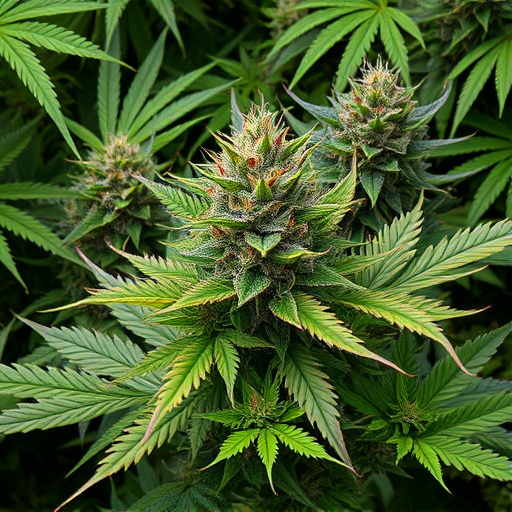
Terpenes, often referred to as the aromatic compounds of cannabis, are a diverse group of volatile oils responsible for the unique flavors and fragrances associated with different strains of cannabis. These compounds play a crucial role in the overall experience of consuming cannabis, as they not only contribute to the distinct taste profiles but also interact with the plant’s cannabinoids, such as THC and CBD. With over 100 known terpenes identified in cannabis, each offering unique properties, understanding their significance is key to appreciating the complex world of this plant.
The specific terpenes found in cannabis can vary widely between strains, leading to a vast array of aromatic experiences. For example, myrcene is commonly associated with earthy and fruity notes, while limonene brings a refreshing citrus aroma. Pinene offers a piney scent, and linalool is known for its floral and lavender-like characteristics. These terpenes not only influence the sensory appeal but also may contribute to the potential therapeutic effects of different cannabis strains.
The Role of Terpenes in Different Strains of Cannabis
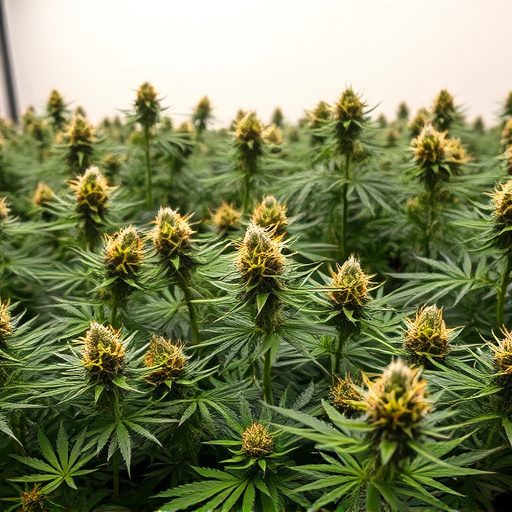
Terpenes, a diverse group of aromatic compounds, play a pivotal role in distinguishing various strains of cannabis. Each strain exhibits a unique terpene profile, contributing to its distinct flavour, aroma, and even potential therapeutic effects. For instance, myrcene, with its earthy and fruity notes, is prevalent in many indica strains, promoting relaxation and sleep. In contrast, limonene, known for its citrusy scent, is often found in sativa varieties, boosting energy levels and enhancing focus.
These compounds interact synergistically with cannabinoids like THC and CBD, a phenomenon known as the entourage effect. The specific combination of terpenes in different strains can amplify or temper the effects of these primary compounds. Understanding terpene profiles is thus crucial for cannabis enthusiasts seeking tailored experiences, whether it’s a tranquil evening or an uplifting afternoon buzz.
How Terpenes Impact the User Experience and Therapeutic Benefits

Terpenes, often referred to as the “aroma compounds” of cannabis, play a pivotal role in shaping the user experience and therapeutic potential of different strains. These volatile organic compounds are responsible for the distinct smells and flavors associated with various cannabis varieties, but their impact goes far beyond sensory appeal. The unique chemical structures of terpenes interact synergistically with cannabinoids like THC and CBD, modulating their effects on the body and mind. For instance, myrcene, a common terpene, is known to enhance the relaxing and sedative properties of cannabis, making it particularly appealing for evening use or managing insomnia.
Beyond pleasure, terpenes contribute to the therapeutic benefits of cannabis. Some terpenes possess anti-inflammatory, antimicrobial, and analgesic properties, which can complement the effects of cannabinoids in treating pain, inflammation, and certain respiratory conditions. Linalool, found in many lavender-scented strains, is renowned for its calming effects, making it valuable for stress relief and anxiety management. Understanding the terpene profile of different cannabis strains allows users to tailor their choice for specific desired outcomes, enhancing both recreational enjoyment and medicinal applications.
Terpenes, the aromatic compounds found in cannabis flowers, play a pivotal role in shaping the unique experiences and therapeutic potential of different strains. By understanding their diverse profiles, users can navigate the market more effectively, selecting varieties that align with their desired effects and preferences. The impact of terpenes on the user experience is undeniable, offering not only delightful sensory delights but also contributing to the overall well-being and satisfaction derived from cannabis consumption.



